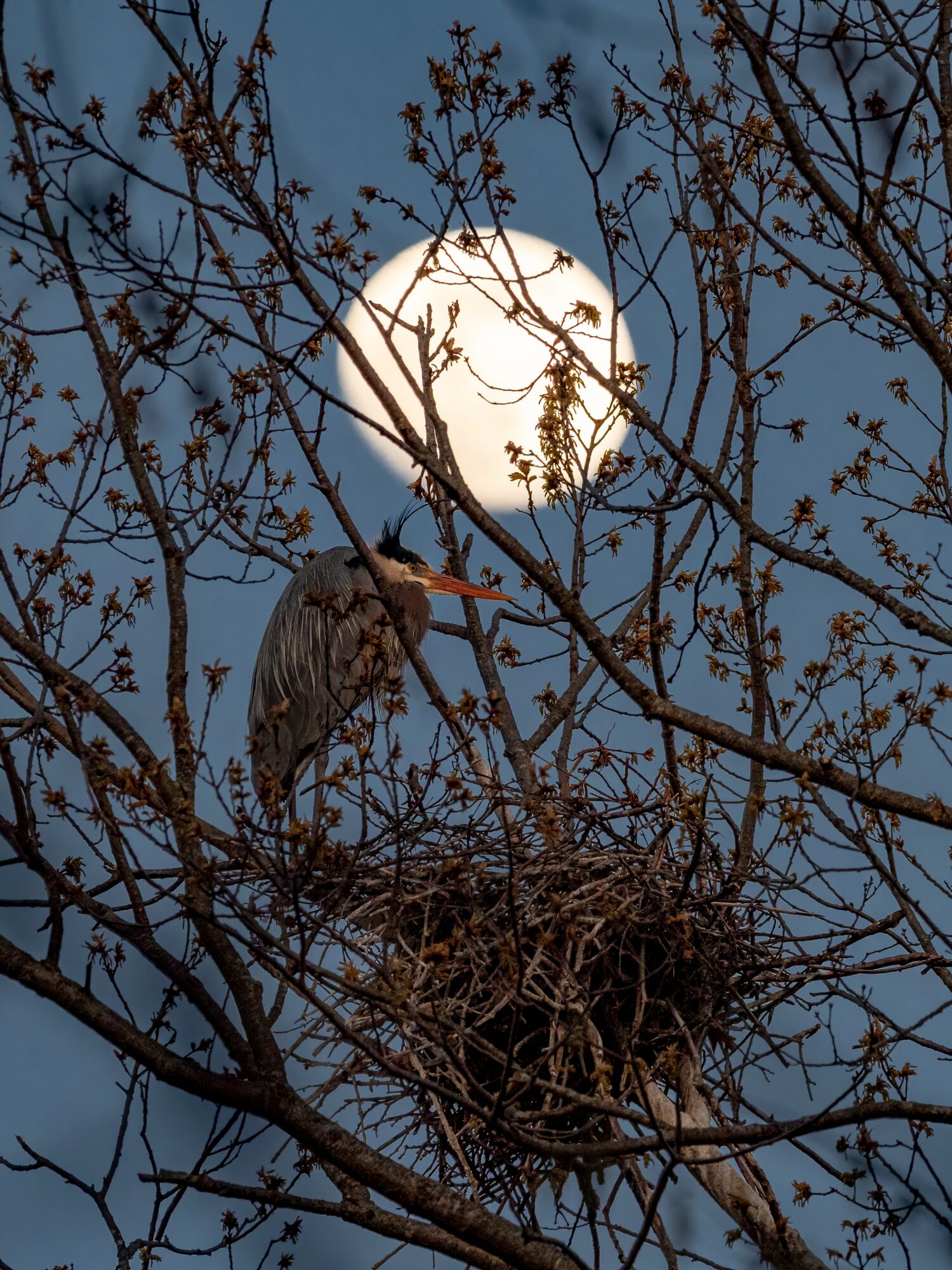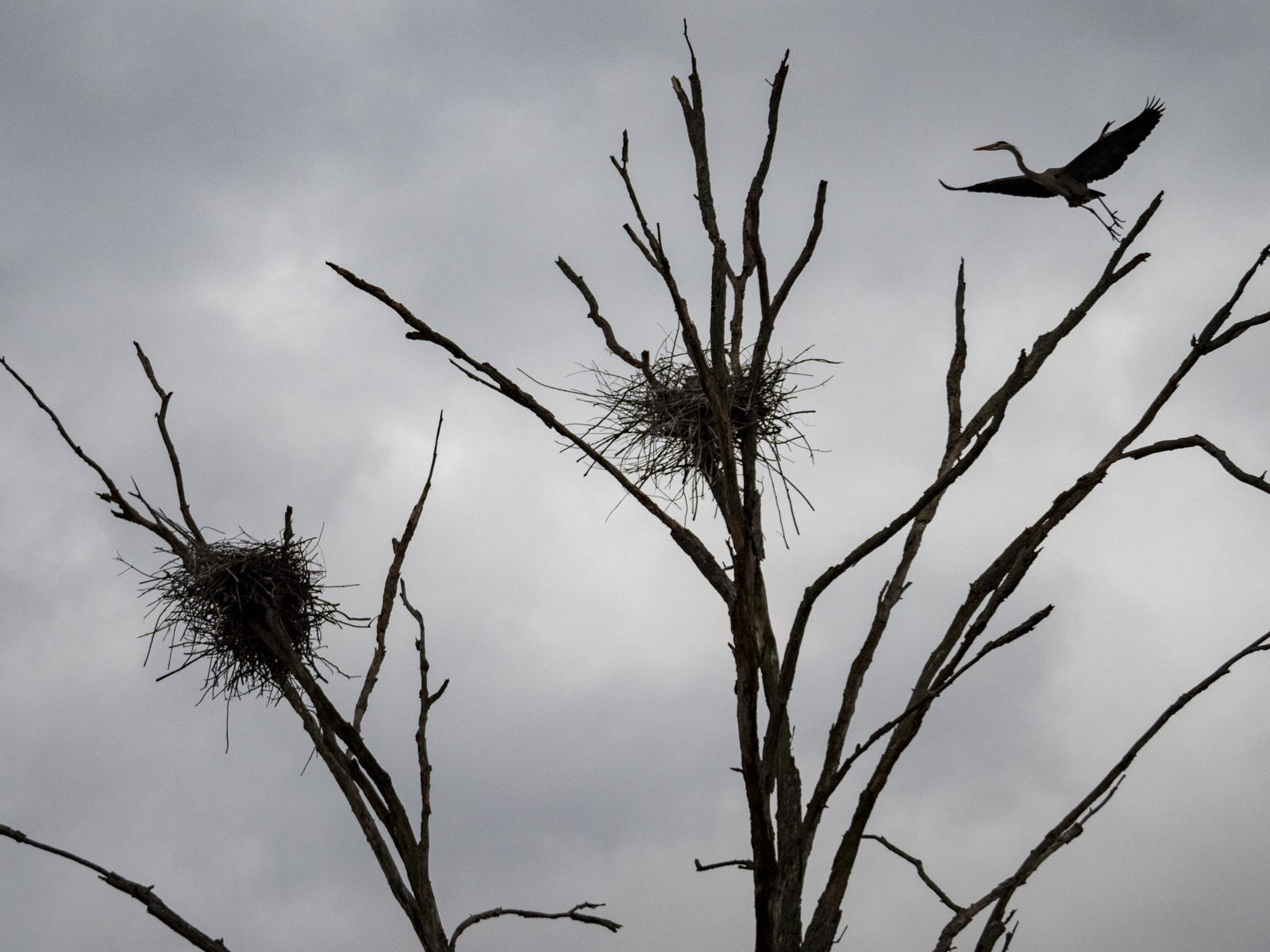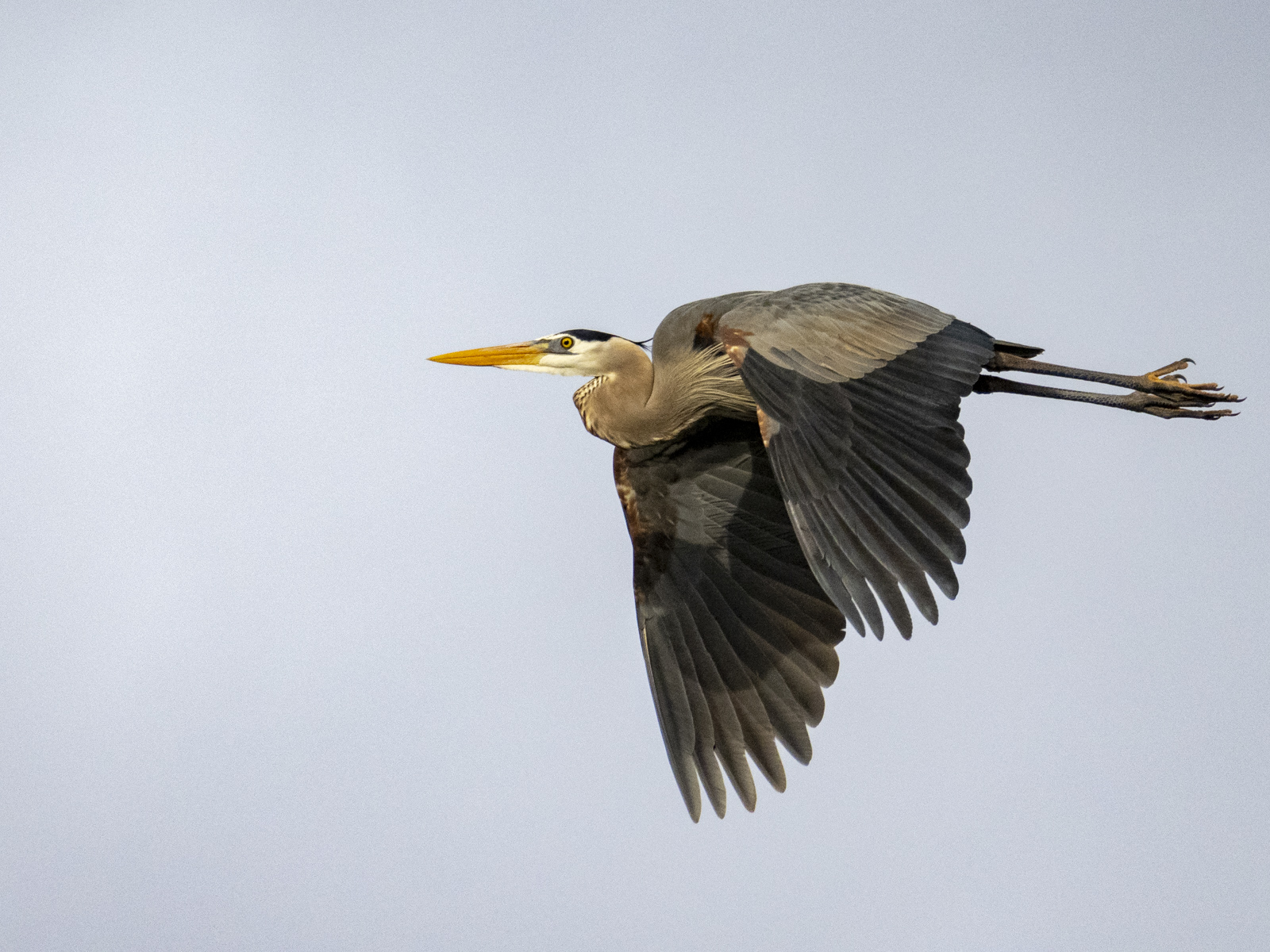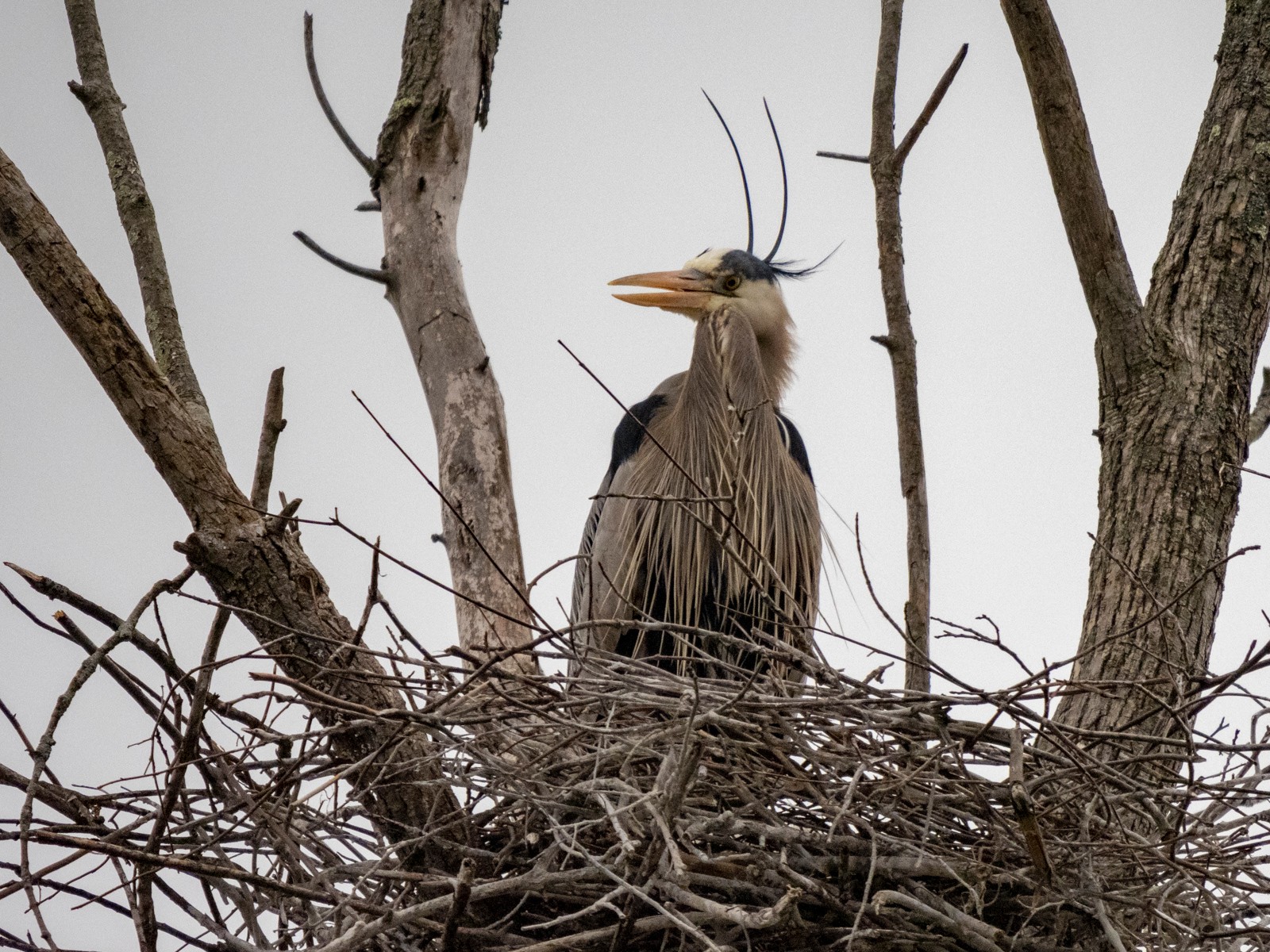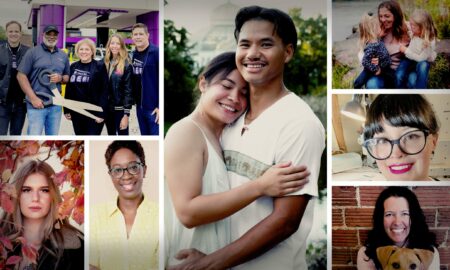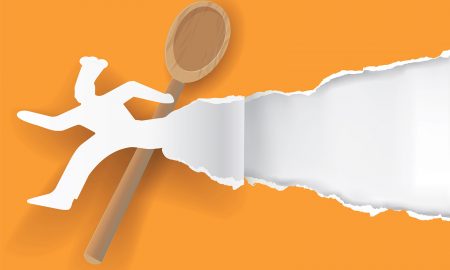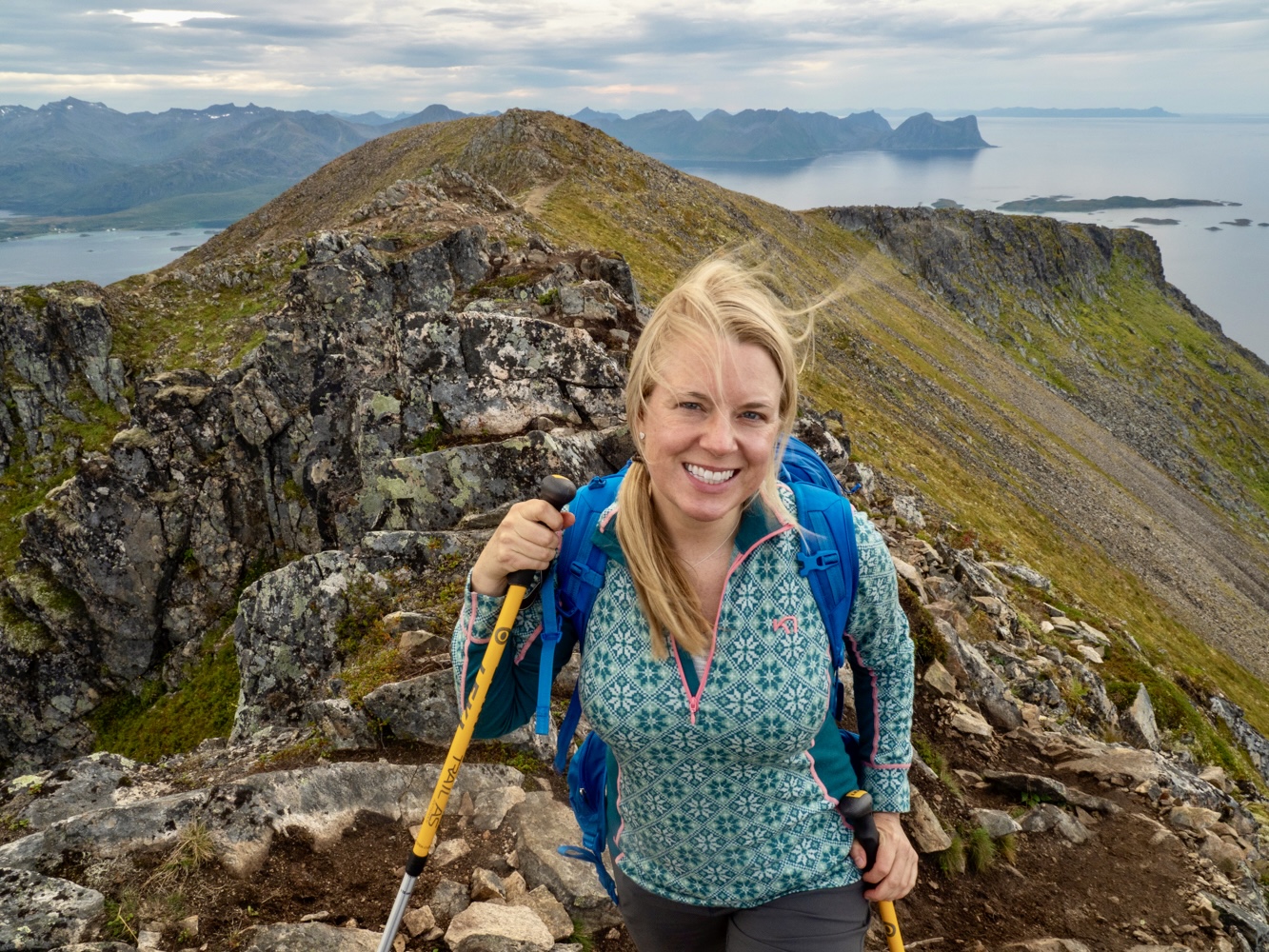

Today we’d like to introduce you to Lynn Cornell.
Hi Lynn, so excited to have you with us today. What can you tell us about your story?
I’ve been interested in birds for as long as I can remember. Even as a kid growing up in northern Minnesota, I would always notice them out in nature. I’m not a super-serious birder, but I am a bird enthisiast and I love getting outside, especially in the spring, to see migrating birds. I’ve also traveled to different parts of the world to see both new species and familiar birds that travel incredible distances. In fact, I met my husband, Michael Melford—a National Geographic photographer and conservationist—on a trip to Antarctica while viewing penguins.
As for how I became involved in Save the Rookery: one evening in early 2021, my husband and I received an email forwarded from a neighbor in Rochester who told us about a great blue heron rookery (nesting site) just a couple of miles from our home. We had often seen herons flying overhead in the evenings, returning from a day out fishing, but hadn’t really thought about where they nested and raised their young each year. It turned out this rookery had been there for decades, known mainly to the immediate neighbors.
This initial email explained that the rookery was now at risk—someone was proposing a housing development at the rookery site. After we received this message, my husband and I both couldn’t sleep that night. We were so disturbed by the thought that a housing development could destroy the only rookery in our area! We learned that, as part of the development approval process, there would be a series of public meetings at both the county and township levels. Several community members attended a first hearing in front of the county commissioners, which was my first real involvement in local government. Since we were all just learning about the process and how to express concerns, we nicknamed ourselves “the Rookies,” in reference to the rookery. Members of the public could express their concerns, but we felt like we weren’t truly listened to. The whole process seemed to be set up in favor of developers.
We kept organizing, gathering information, consulting with ecologists and bird experts, and reaching out to others who cared about protecting the rookery. To help keep us organized and to share information more broadly, I created our website, savetherookery.org, and we also launched a Facebook group and an Instagram account. Eventually, our group incorporated as a nonprofit, Save the Rookery, for which I serve as board president. Not only did we organize people to show up at local government meetings and write opinion pieces for local newspapers, but our group also filed lawsuits to appeal the local government decisions at each step.
What was remarkable to me was the community interest and involvement. Over the course of a couple of years, over a thousand community members signed petitions in support of the rookery, showed up for meetings, and wrote letters. Even a high school environmental group chose Save the Rookery as their cause to work on for the year, and their involvement took on a life of its own—they even organized their own protest. Our efforts also gained significant media attention locally, statewide, and even nationwide in Audubon magazine, which helped raise broader awareness of the issue.
Throughout the process, we offered several practical solutions, including buying the land outright or working on a compromise plan that would protect the most sensitive parts of the land while allowing for some housing development. We hoped to turn this site into a Minnesota Scientific and Natural Area (SNA) and allow public access during the months that the birds were not present and raising their young. Still, the odds were against us. It seemed like at every step, the system didn’t work for us: the local government didn’t listen to the community (only the developers), and the courts did not decide in our favor, even though we expressed our well-reasoned arguments.
Eventually, the housing development did move forward. The developer’s agents cut down the trees with nests and put in a road. The birds did not return, but some formed a small satellite rookery elsewhere. Meanwhile, none of the lots have sold, even though they have been for sale for over two years. There is still a chance that the birds could return, but it seems unlikely, as much of the original habitat has been lost. This is an example of how the great blue heron population in Minnesota has declined significantly over the past 25 years, largely due to habitat loss and human disturbance.
Still, there is hope. Our community has learned from this experience. We have raised awareness of conservation and have mobilized people to get out and vote. We have driven the conversation in local elections toward the topic of conservation. We submit questions to candidates for public office, asking how they would balance conservation of sensitive areas with the need for housing in our area. We have even inspired several people to run for—and get elected to—local government positions. In fact, one of our Save the Rookery board members, Jake Johnson, a local teacher, recently announced his campaign for the U.S. House of Representatives! Our township rewrote its land use plan to account for situations like this. Beyond our county, other concerned community members from across Minnesota have contacted our group to learn how they, too, can rewrite their local land use plans to protect valued resources like rookeries. So even if the herons have not yet returned to this original rookery site, I know we have made a lasting impact on conservation in Minnesota.
We all face challenges, but looking back would you describe it as a relatively smooth road?
It has definitely not been a smooth road. One of the biggest struggles was realizing how much the system seemed to favor development over conservation. Even when we presented well-reasoned arguments, proposed practical solutions, and mobilized strong community support, the local government largely listened to the developers. It was also disheartening to see that even the courts did not rule in our favor at each appeal. Beyond the official channels, it was also an emotional struggle—watching trees full of heron nests be cut down was devastating for all of us.
Still, through those challenges, we became stronger as a community. We learned how to organize, how to engage with the public process, and how to keep going even when the outcome wasn’t what we had hoped for. Even though the fate of the original rookery remains uncertain, we know that our efforts have made a lasting impact on conservation and community awareness.
Thanks for sharing that. So, maybe next you can tell us a bit more about your work?
In my professional life, I’m a physician specializing in kidney pathology. I study kidney biopsies under the microscope to help diagnose a wide range of diseases, from autoimmune conditions to transplant rejection. I also work on research projects to better understand kidney disease and improve patient outcomes. In addition to my clinical and research work, I’m passionate about education and mentorship. I established a fellowship program in kidney pathology and have helped train the next generation of pathologists.
Over time, I’ve become increasingly involved in advocacy and policy development as it relates to medicine. I’ve realized how important it is to express our perspectives to elected officials and advocate for positive change. I’ve been active in the Minnesota Medical Association, serving on several committees and now as a member of the Board of Trustees. I’m also involved with the American Society of Transplantation, where I organized a conference on ethics last year and serve on the Public Policy Committee.
I’m most proud of my contributions both to advancing medical knowledge and to strengthening the role of physicians’ voices in public dialogue. What sets me apart is a combination of scientific expertise (particularly in pathology and laboratory medicine), a commitment to education and mentorship, and a belief that specialized knowledge should be used not just to help individual patients, but also to advocate for broader causes that matter to our communities—whether in medicine, public health, or conservation.
How do you think about luck?
Luck has certainly played a role in my life. I feel incredibly lucky to have had opportunities to do meaningful work that I care deeply about, and to meet people—both professionally and personally—who have inspired and supported me. Meeting my husband on a trip to Antarctica while viewing penguins is a great example of wonderful, unexpected good luck!
However, luck only takes you so far. Many of the important things I’ve accomplished have come from persistence and a willingness to step into unfamiliar roles. In advocacy work, especially, it often feels like an uphill battle—but small moments of good luck, like connecting with the right people at the right time, can make all the difference.
Of course, the challenges have helped me grow. Facing setbacks, whether in conservation efforts or in professional life, has taught me resilience and creativity, and has ultimately led me to new and better opportunities that I might not have otherwise found.
Contact Info:
- Website: https://savetherookery.org
- Instagram: https://www.instagram.com/savetherookery
- Facebook: https://www.facebook.com/groups/266561745128418
- Twitter: https://x.com/SaveTheRookery
